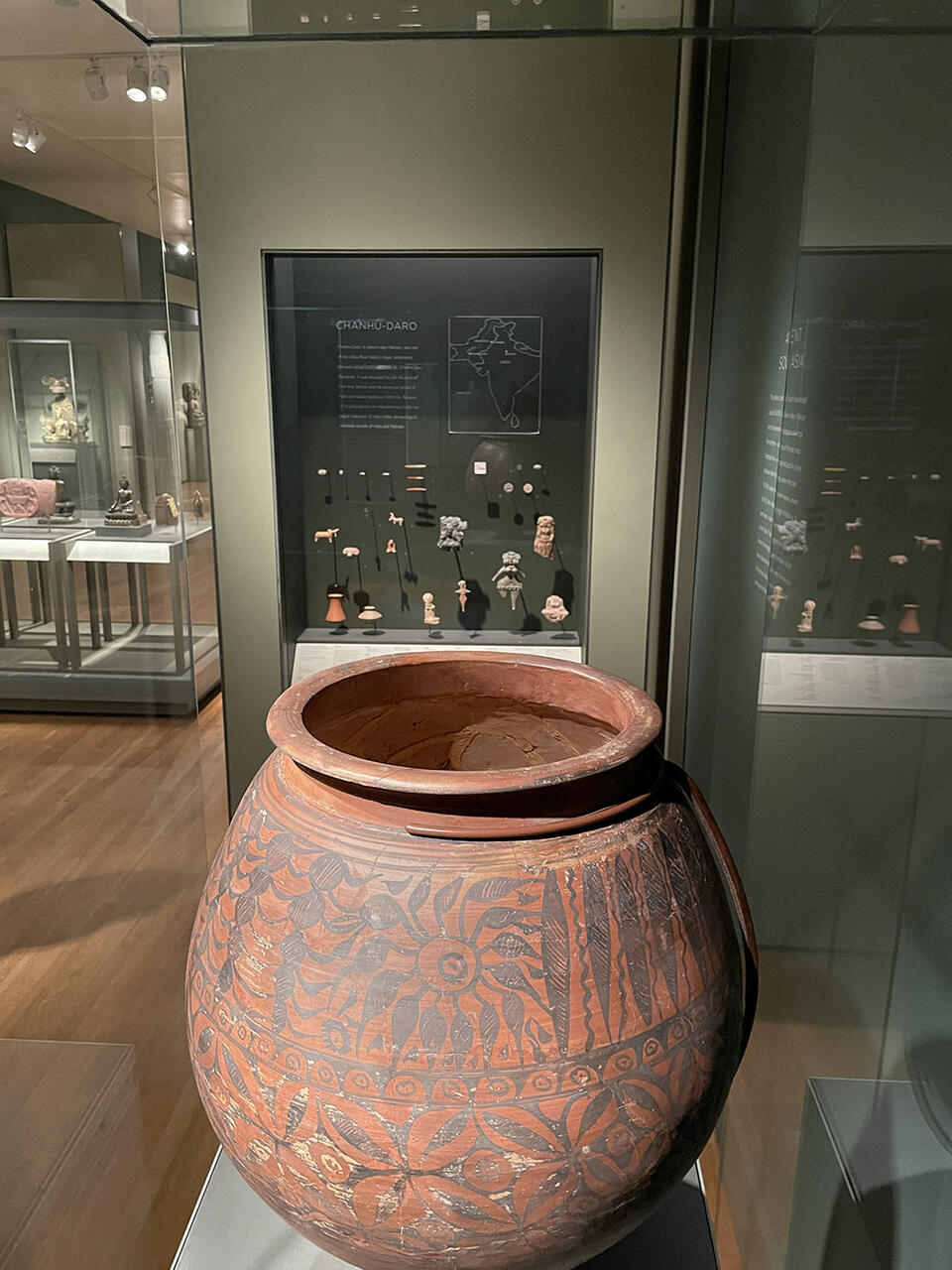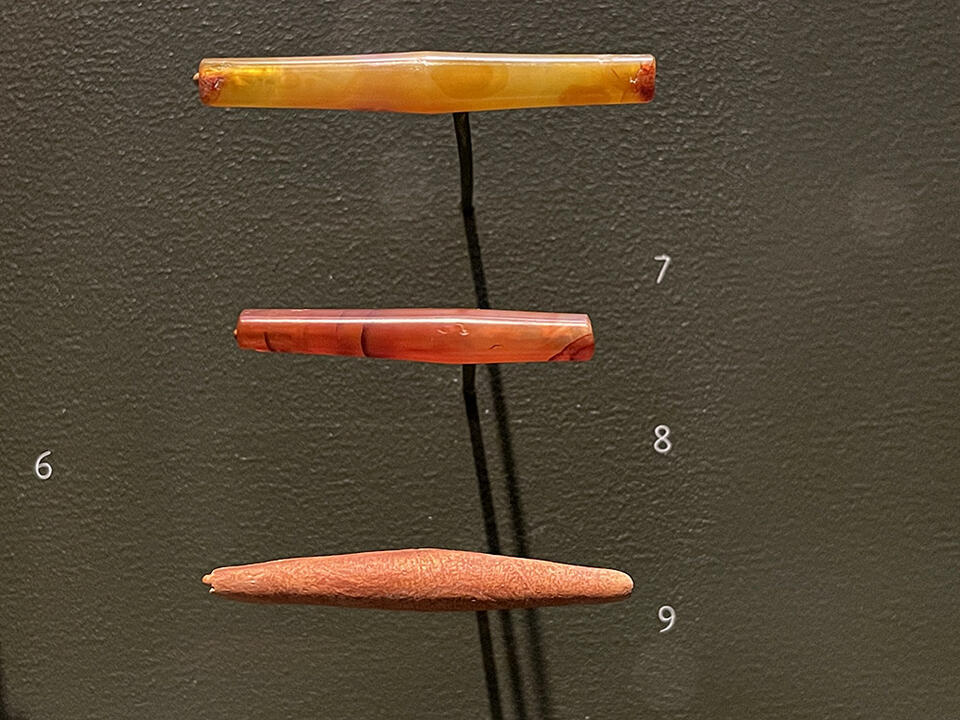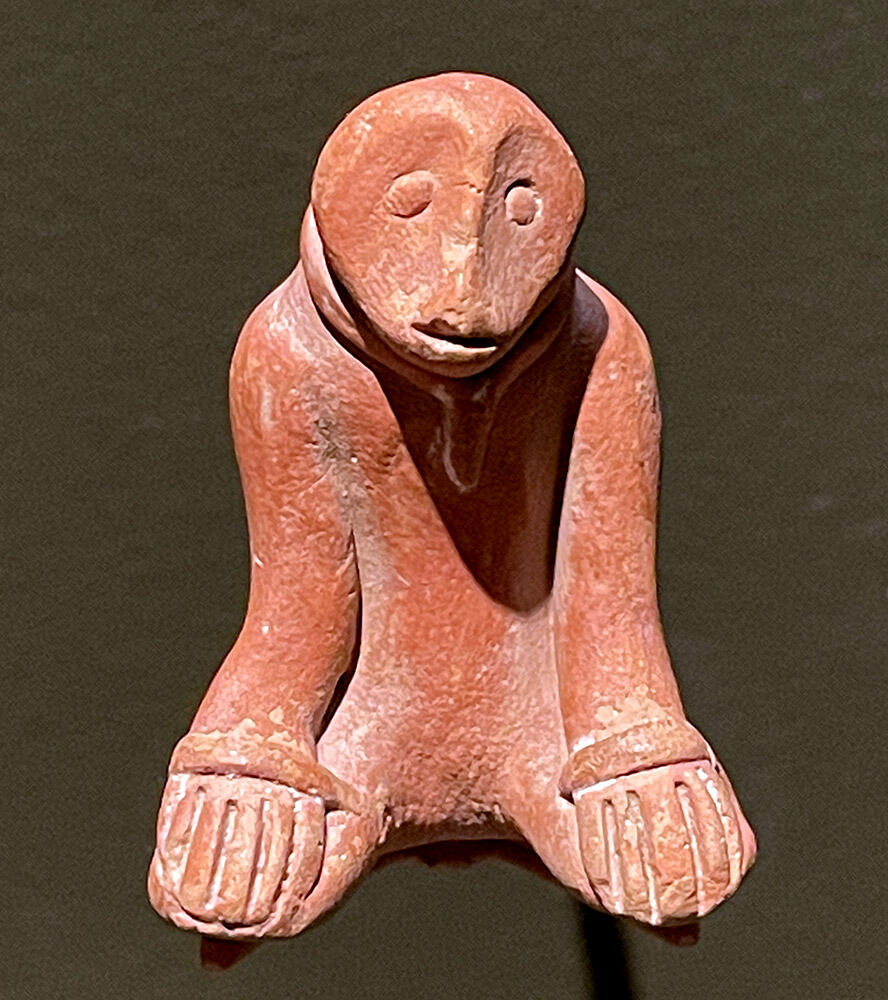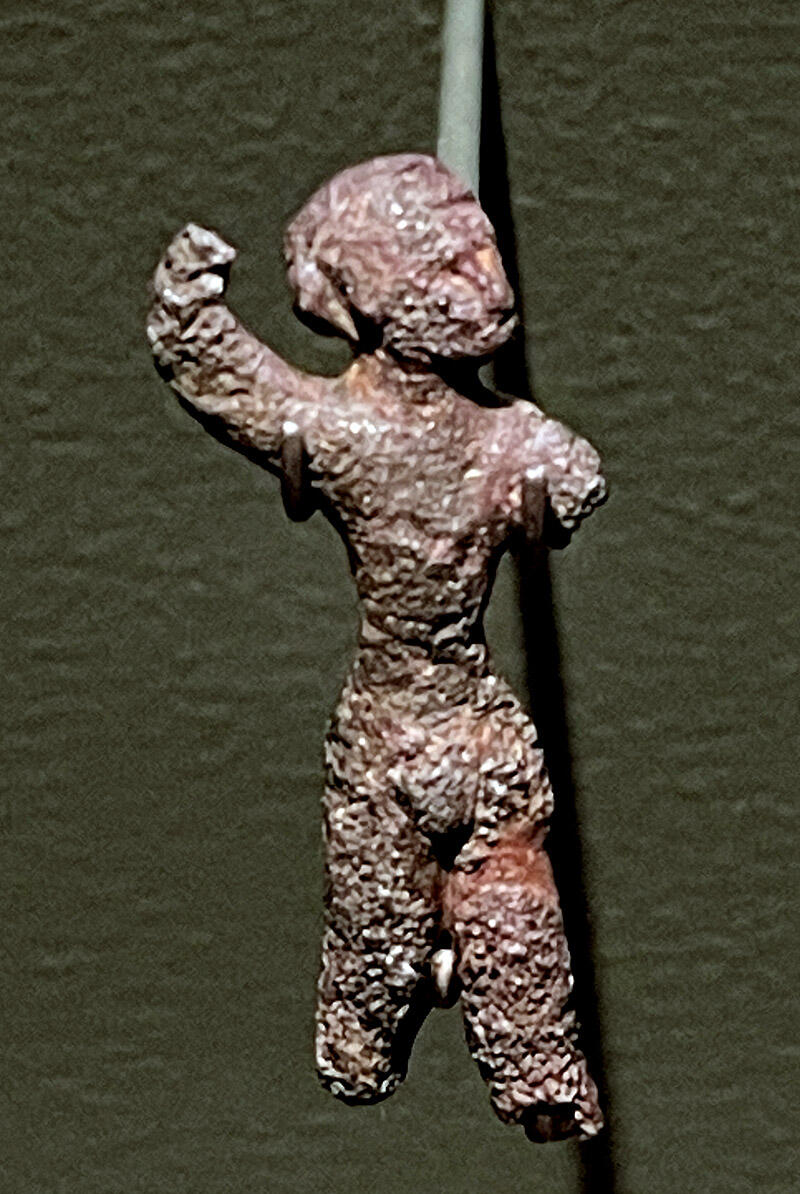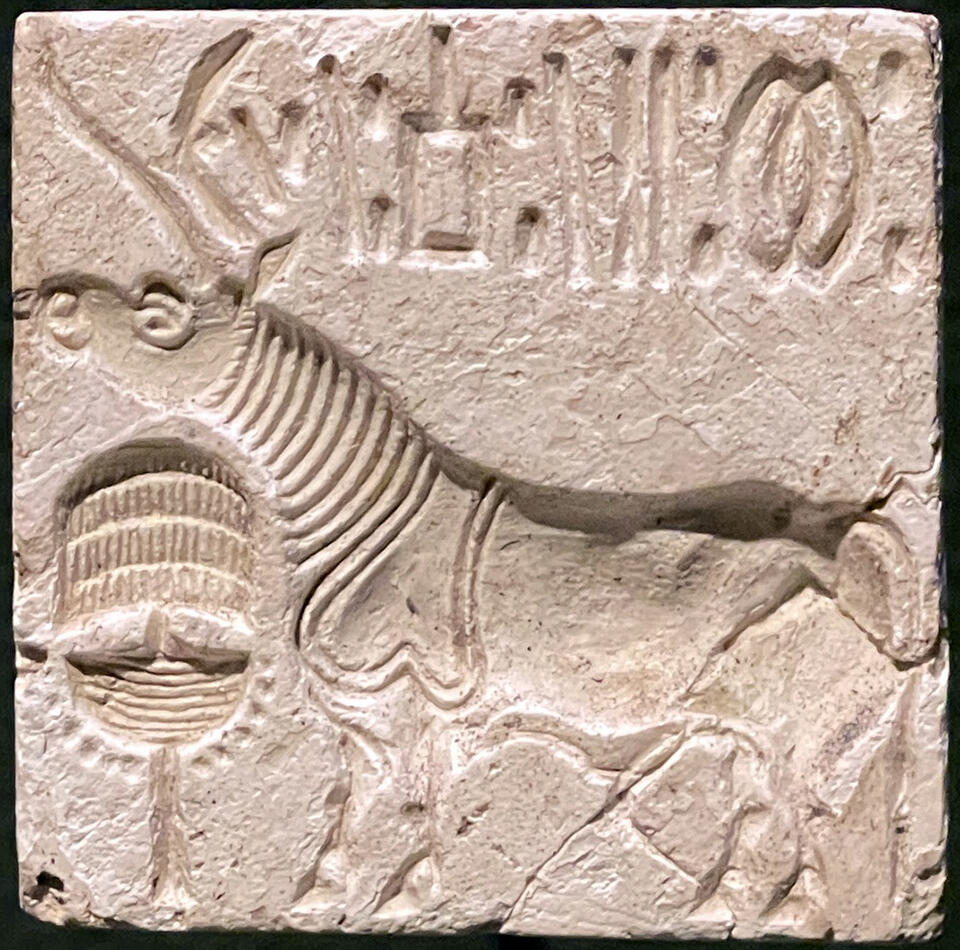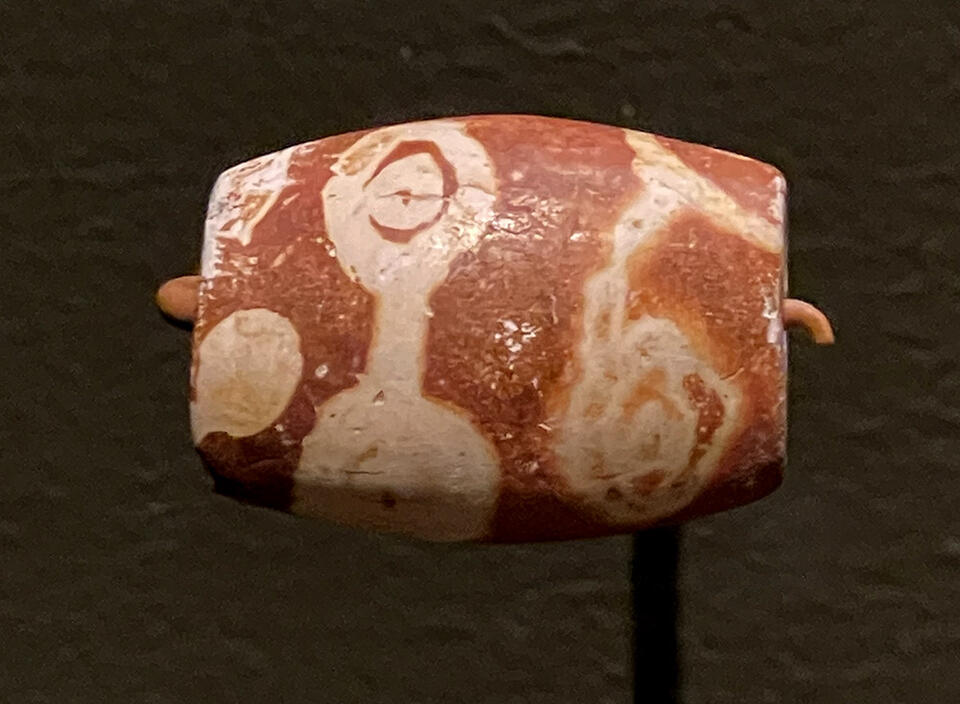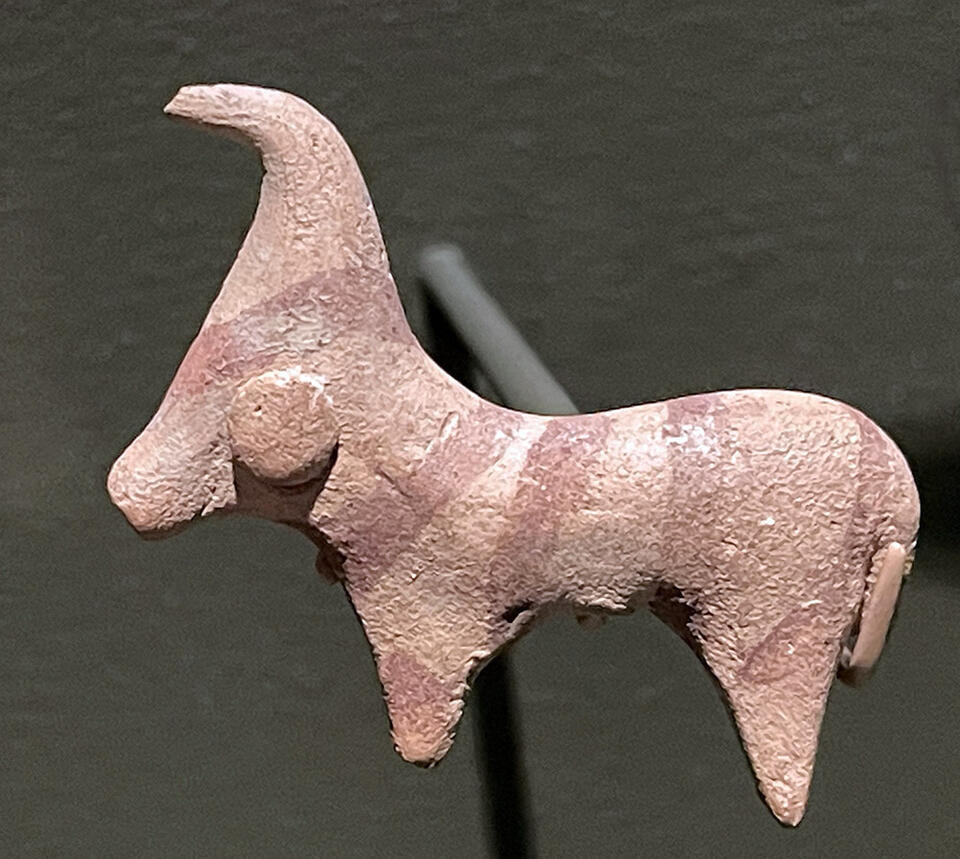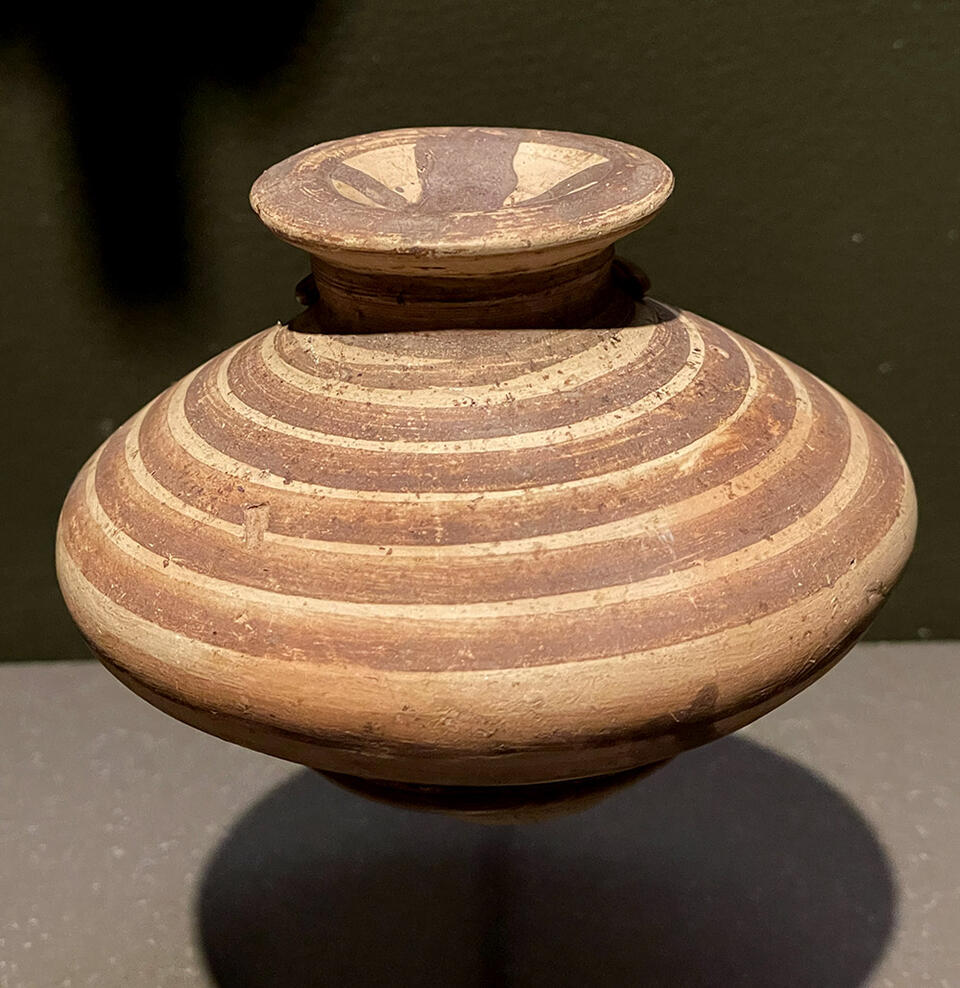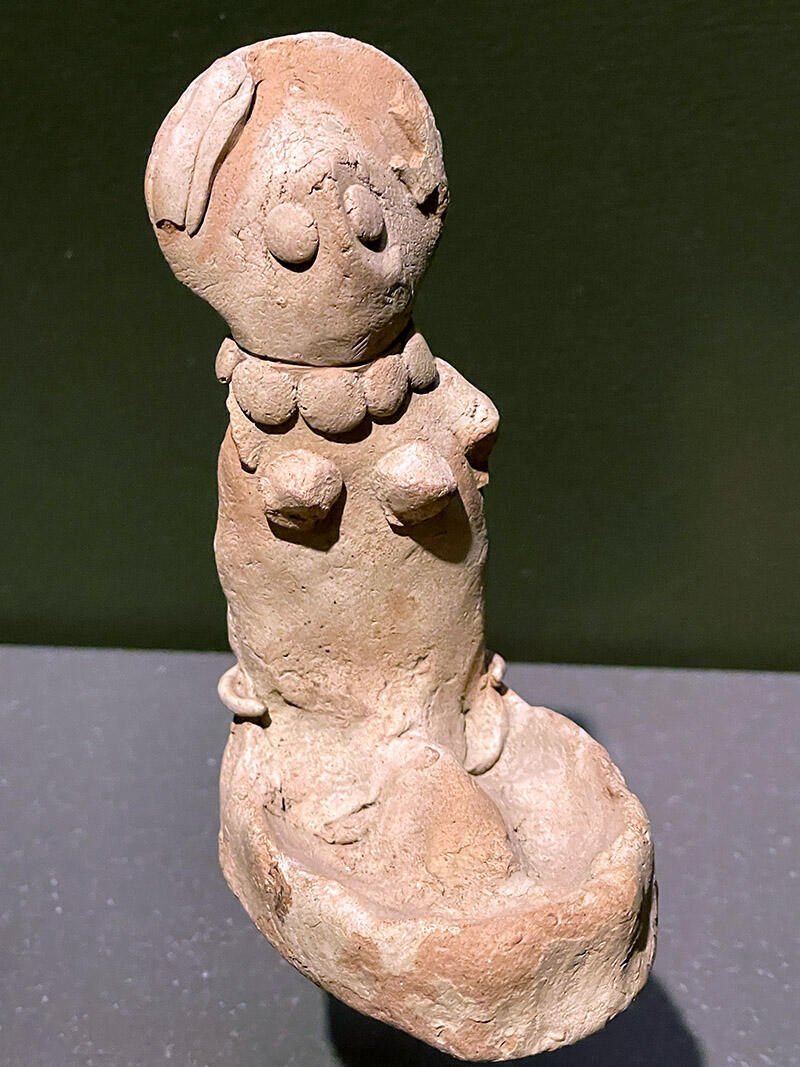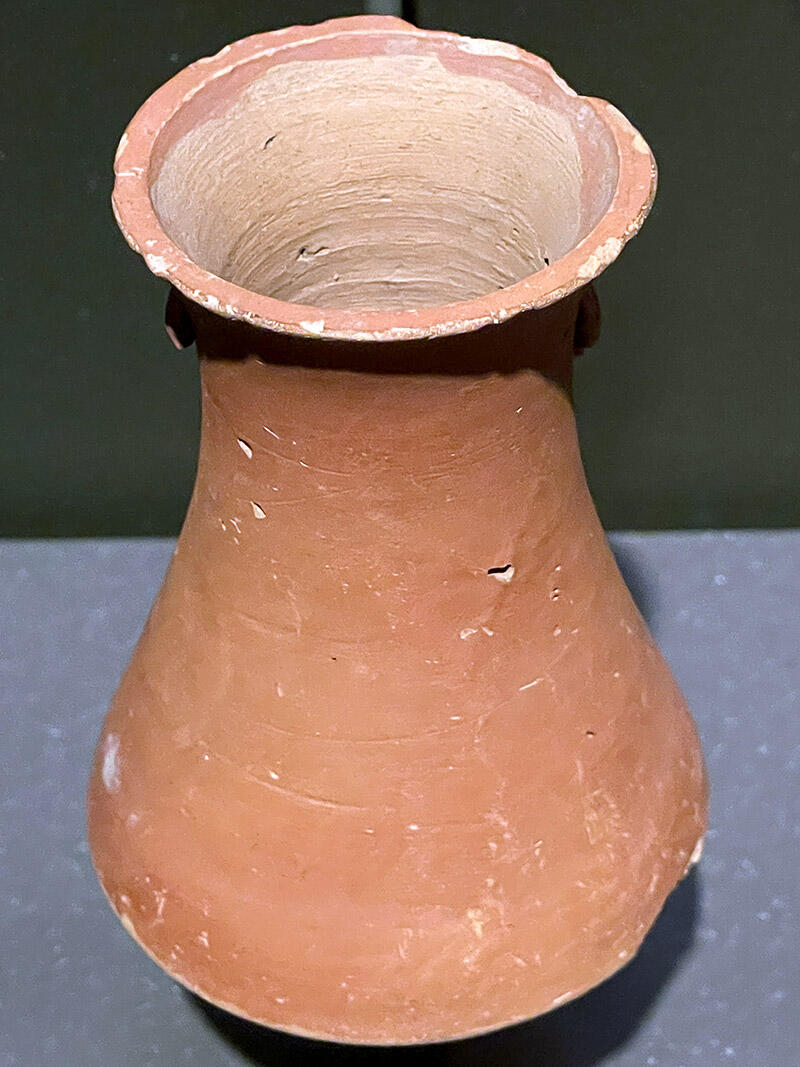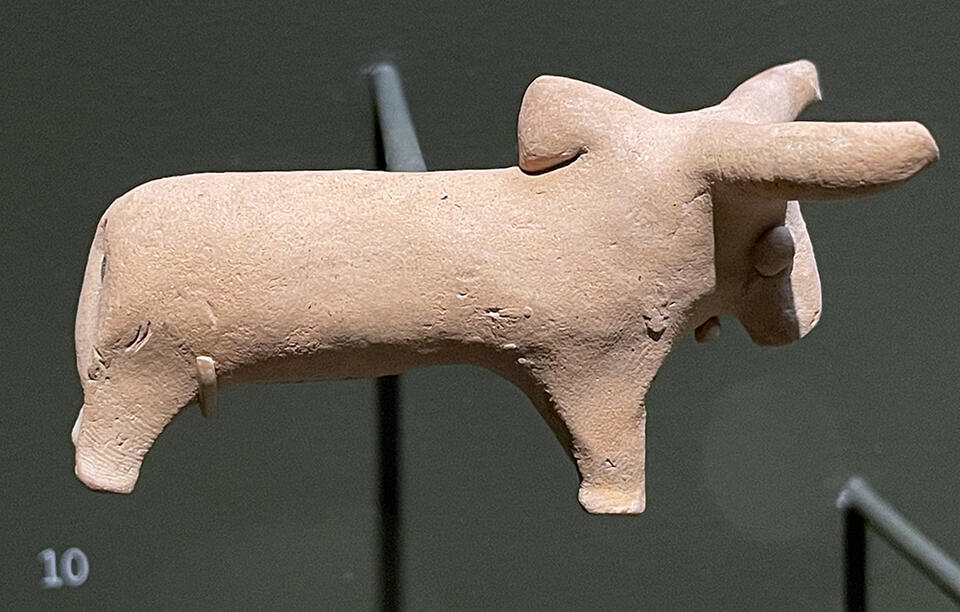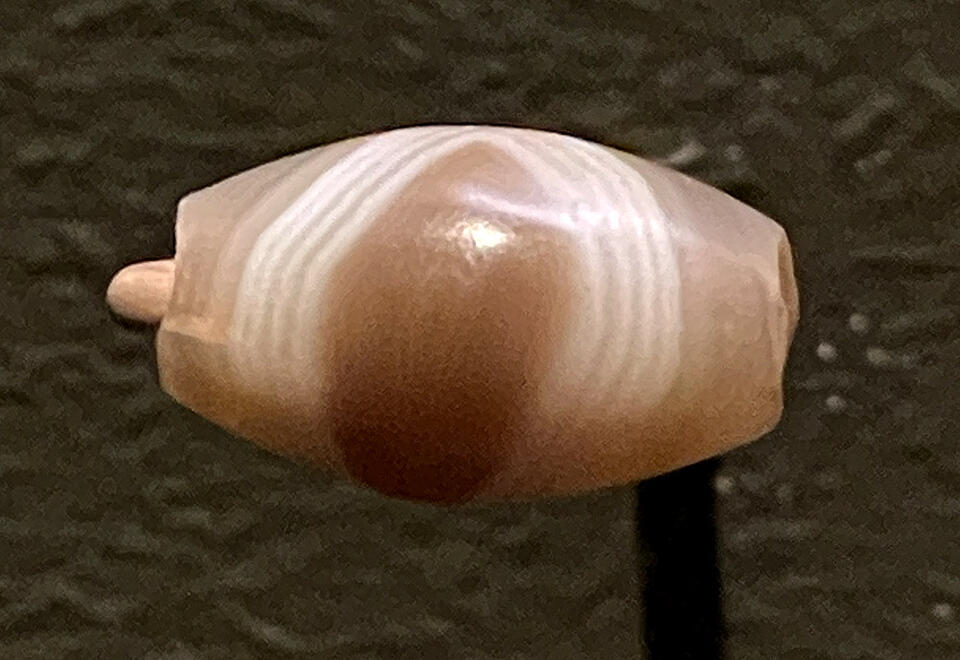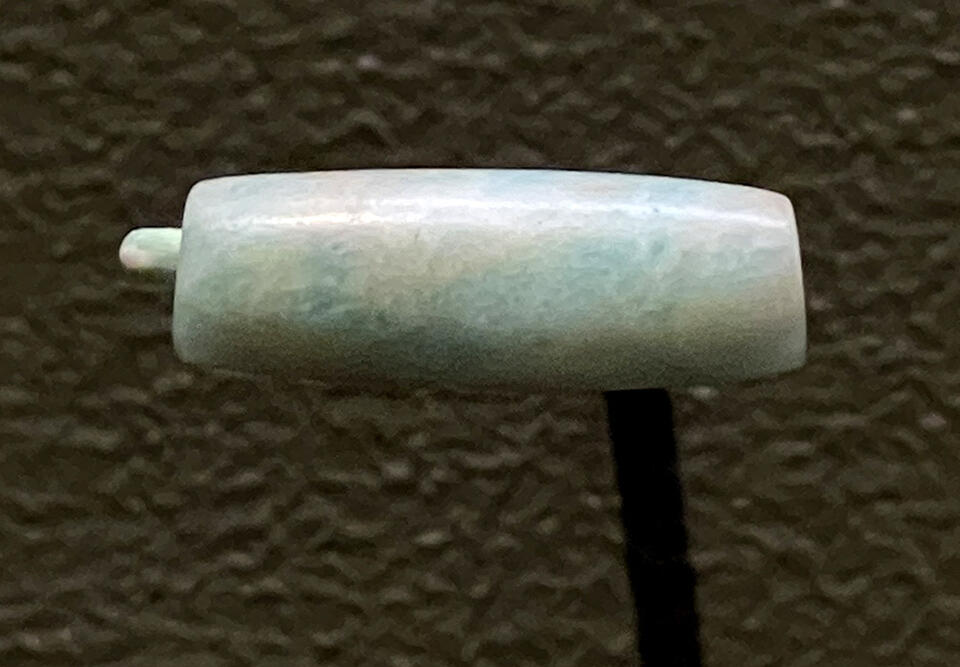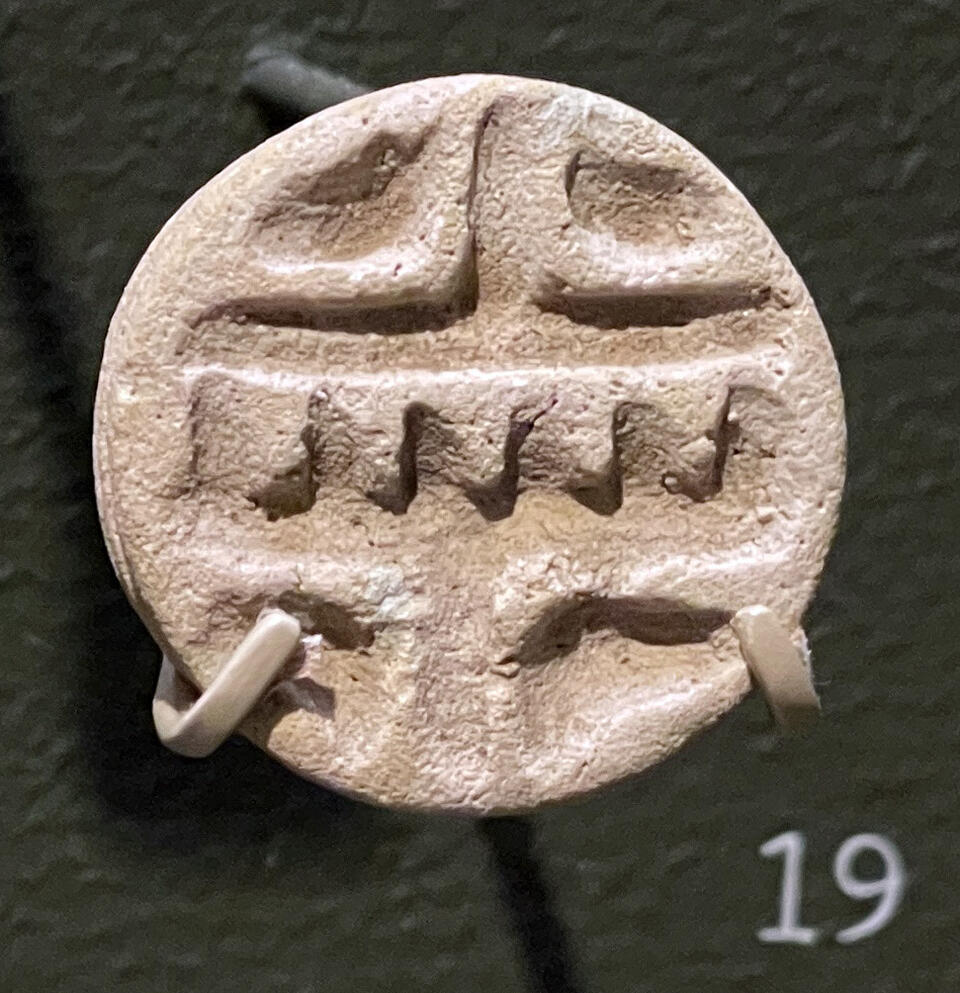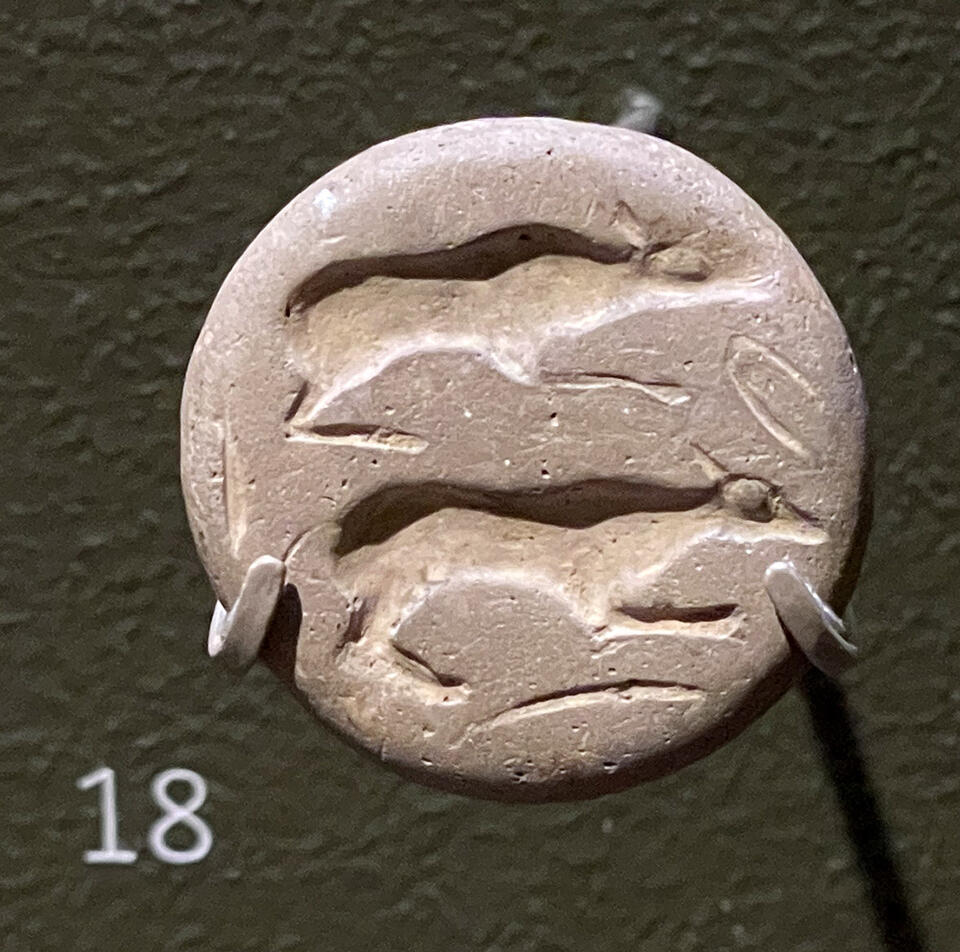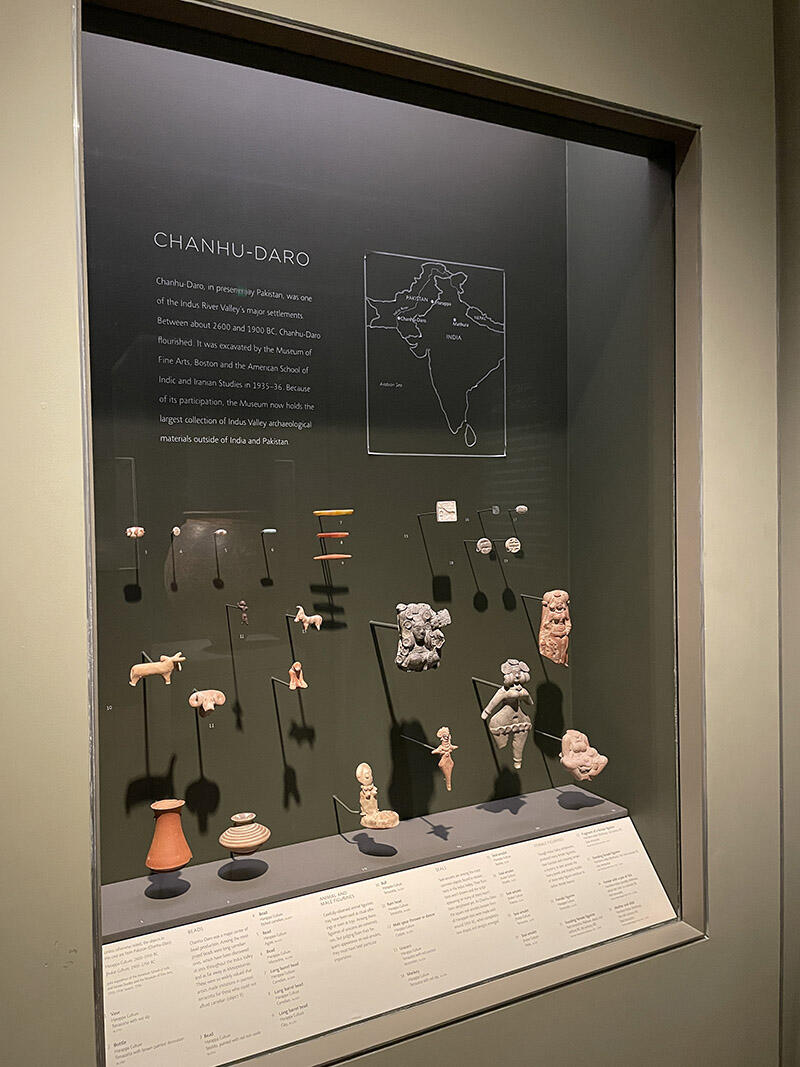January 17th, 2023
The Museum of Fine Arts (MoFA) in Boston, USA has the largest collection of Indus artifacts outside India and Pakistan. MoFA collaborated with the American School of Indic and Iranian Studies in 1935-36 to excavate Chanhu-daro in Sindh, Pakistan, then British India. This mysterious, small and sophisticated craft manufacturing town about 80 miles south of Mohenjo-daro was discovered by N. G. Majumdar in 1931. He and the leader of the Chanhu-daro excavations Ernest J.H. Mackay had both worked at Mohenjo-daro earlier in the decade, so one can only imagine how thrilled they were to find another place with the same if not more elaborate jewelry and objects in a handful of small mounds. For a good description at the time, Dorothy Mackay, Ernest's wife and collaborator wrote the comprehensive article for an American magazine Finds at Chanhu-daro (1937).
I went to the Museum because its website listed two objects on display. When I asked the information staff where to go and see the seal and figurine, they said the objects were not on display, and no Indus objects were to be seen live. I asked where ancient South Asian material would be kept, and found my way through the labyrinth to a stunning corner, with a whole display case of items from Chanhu-daro. In front of it was one of my favorite and one of the greatest known Indus pots in its own display case. So was one of two favorite Indus monkeys, the precious statuette of a spear thrower, etched beads, three long carnelian beads, a unicorn figurine and other examples that re-affirm the high quality of objects from Chanhu-daro. Were only the best of the best allowed to work here? Did their products carry extra brand value?
Below are almost all the key objects as images, and MoFA's text accompanying the objects in the display case. A separate blog entry will cover the large pot seen in the first image.
"CHANHU-DARO. Chanhu-Daro, in present-day Pakistan, was one of the Indus River Valley's major settlements. Between about 2600 and 1900 BC, Chanhu-Daro flourished. It was excavated by the Museum of Fine Arts, Boston and the American School of India and Iranian Studies in 1935-36. Because of its participation, the Museum now holds the largest collection of Indus Valley archaeological materials outside of India and Pakistan."
"BEADS. Change-daro was a major center of bead production. Among the most prized beads were long carnelian ones, which have been discovered at sites throughout the Indus Valley and as far away as Mesopotamia. These were so widely valued that artists made imitations in plain terracotta for those who could not afford carnelian. (object 9)."
"ANIMAL AND MALE FIGURINES. Carefully-observed animal figurines may have been used as ritual offerings or even as toys. Among them, figurines of unicorns are extremely rare, but judging fro their frequent appearance on seal-amulets, they must have held particular importance."
"SEALS. Seal amulets are among the most common objects found in excavations in the Indus Valley. Their functions aren't known and the script appearing on many of them hasn't been deciphered yet. At Change-Daro the square seal-amulets known from all Harappan sites were made until around 1900 BC, when completely new shapes and designs emerged."
"FEMALE FIGURINES. Though Indus Valley settlements produced many female figurines, their function and meaning remain a mystery. In later periods the heavy jewels and shapely bodies of these early figures continue to define female beauty."
Object List from Chanhu-daro Display, all described as from Harappa Culture
1. Vase, Terracotta with red slip, 36.2712
2. Bottle, Terracotta with brown painted decoration 34.1965
3. Bead, Steatite painted with red iron oxide, 36.1156
4. Bead, Etched carnelian, 36.1073
5. Bead, Agate, 36.1170
6. Bead, Microcline, 36.1342
7. Long barrel bead, Carnelian, 36.1059
8. Long barrel bead, Carnelian, 36.1057
9. Long barrel bead, Clay, 36.10251
10 Bull, Terracotta, 36.2212
11. Ram head, Terracotta, 36.2198
12. Male spear thrower, Copper, 36.2236
13. Unicorn, Terracotta with red painted decoration, 36.2210
14. Monkey, Terracotta with red slip, 36.2218
15. Seals-amulet, Steatite, 36.953
16. Seals-amulet, Steatite, 36.936
17. Seals-amulet, Steatite, 36.941
18. Seals-amulet, Steatite, 36.935
19. Seals-amulet, Steatite, 36.938
20. Female figurine, Terracotta, 36.2239
Note: Over 1,700 Indus objects in the collection can be found online under a search for "Harappa." Only a dozen or so have images, but there is this nice look at carnelian beads in various stages of manufacture and little clay cart and a beautiful ladle..
Hopefully, MoFA will one day make more of these objects available online in color images, and advertise their physical presence in their galleries to what seem to be more than enough South Asian visitors. Most of whom might have missed these splendid Indus objects. Who knows, maybe an exhibition showing more than 1% of the Chanhu-daro objects would be great too one far-off day.
- Omar Khan, January 2023

